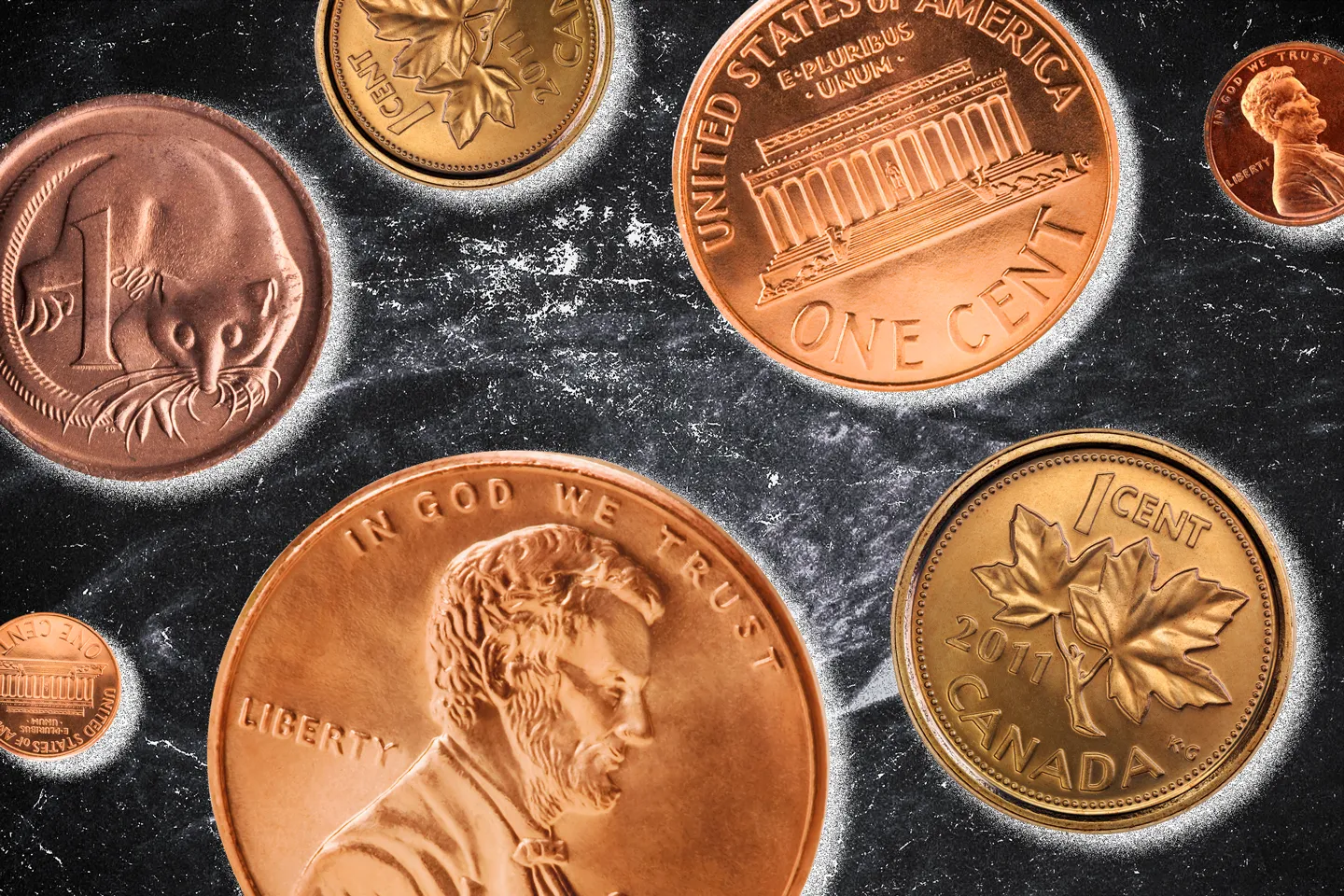Penny's Demise: The U.S. Plans To Eliminate Penny Circulation By 2026

Table of Contents
The Economic Case for Eliminating the Penny
The economic arguments for removing the penny are compelling and multifaceted. They primarily center on the high cost of production and the inefficiency of its usage in modern transactions.
The High Cost of Production
Minting pennies is remarkably expensive. The cost of producing a single penny significantly exceeds its face value.
- Material Costs: The composition of the penny (zinc core, copper plating) fluctuates with commodity prices, making its production increasingly costly.
- Minting Process Costs: The machinery, labor, and energy involved in the minting process contribute to the overall expense. Estimates suggest it costs well over 2 cents to make a penny.
- Environmental Impact: The extraction and processing of materials for penny production have a notable environmental footprint, adding to the overall economic and ecological burden.
The cost discrepancy between production and face value is unsustainable in the long run. This expense ultimately falls on taxpayers, making the elimination of the penny a potentially cost-effective measure.
The Inefficiency of Penny Usage
Pennies significantly slow down transactions, especially in cash-intensive environments. Their low value often leads to:
- Increased Handling Time: Cashiers and customers spend valuable time counting and handling large quantities of pennies.
- Penny Discarding: Many people simply discard pennies, reducing their circulation and rendering them economically useless. Studies show a significant portion of pennies are not reused.
- Technological Obstacles: The prevalence of digital payment systems has further diminished the relevance of pennies. Many cash registers and vending machines are designed to minimize or avoid handling pennies.
Arguments Against Eliminating the Penny
While the economic arguments are persuasive, significant counterarguments exist concerning the social and practical impacts of penny elimination.
Impact on Low-Income Individuals
Concerns exist about the disproportionate impact on low-income individuals who rely heavily on cash transactions.
- Increased Prices Due to Rounding: Eliminating the penny necessitates a rounding system (up or down), potentially leading to higher prices for goods and services, particularly impacting those with limited financial resources.
- Difficulty for Cash-Dependent Populations: Removing the penny would further marginalize those already struggling financially, making even small purchases more difficult.
- Potential Mitigating Solutions: Implementing strategies like price adjustments or targeted financial assistance programs could help lessen the negative impact on vulnerable populations.
Careful consideration of these factors and the implementation of appropriate safeguards are crucial if the penny is to be eliminated.
The Sentimental Value of the Penny
The penny holds sentimental and historical value for many Americans.
- Nostalgia and Childhood Memories: For many, the penny evokes nostalgic memories associated with childhood savings and piggy banks.
- Historical Significance: The penny's long history and evolution reflect American monetary history.
- Collector Value: Some pennies, especially older or rare ones, possess significant collector value.
The potential loss of this cultural touchstone should be carefully considered, and alternatives, such as commemorative coins or digital preservation initiatives, could be explored to maintain this sentimental connection.
Potential Alternatives and Implications
The elimination of the penny would require the implementation of a suitable alternative system, most likely involving rounding.
Rounding Up or Down
Rounding up or down to the nearest nickel could significantly streamline transactions. However, this system presents potential complications:
- Rounding Methods: Different rounding methods (e.g., always rounding up, or rounding to the nearest even number) will have different implications on business and consumer spending.
- Potential for Bias: Certain rounding systems might disproportionately benefit businesses or consumers depending on pricing strategies.
- Impact on Businesses: Businesses will need to adjust their pricing strategies to account for the change, potentially leading to initial disruptions.
The Future of Cash
The debate about penny elimination is intertwined with the broader discussion on the future of cash in the US.
- Decline of Cash Usage: The increasing dominance of digital payment methods like credit cards, mobile apps, and contactless payments is constantly reducing the reliance on physical cash.
- Influence of Digital Payments: The trend toward digital payments suggests a possible future where the need for even small denominations like the nickel or dime could diminish.
- International Precedents: Many countries have successfully eliminated low-value coins, offering valuable insights into the potential challenges and benefits of such a transition.
Conclusion: The Fate of the Penny – Is it Really Doomed?
The decision to eliminate the penny involves weighing substantial economic benefits against potential social and practical consequences. While the high cost of production and the inefficiency of penny usage strongly support elimination, concerns about the impact on low-income individuals and the sentimental value of the penny cannot be ignored. The implementation of a robust rounding system and potential mitigating measures will be vital in ensuring a smooth transition. The likelihood of the penny's demise by 2026 remains uncertain, dependent on careful consideration of these factors and the overall direction of the U.S. monetary system. What are your thoughts on the potential elimination of the penny? Share your comments below! Let's discuss the future of currency, including penny elimination and coin removal strategies.

Featured Posts
-
 Job Offer Negotiation Handling A Best And Final Offer
May 23, 2025
Job Offer Negotiation Handling A Best And Final Offer
May 23, 2025 -
 Double Trouble In Hollywood Writers And Actors Strike Impacts Production
May 23, 2025
Double Trouble In Hollywood Writers And Actors Strike Impacts Production
May 23, 2025 -
 Lluvias Moderadas El Pronostico Meteorologico Detallado
May 23, 2025
Lluvias Moderadas El Pronostico Meteorologico Detallado
May 23, 2025 -
 Horario Y Transmision Del Partido Mexico Vs Panama Final Liga De Naciones Concacaf
May 23, 2025
Horario Y Transmision Del Partido Mexico Vs Panama Final Liga De Naciones Concacaf
May 23, 2025 -
 Applying Big Rig Rock Report 3 12 Principles In Rock 101
May 23, 2025
Applying Big Rig Rock Report 3 12 Principles In Rock 101
May 23, 2025
Latest Posts
-
 Joe Jonas Unexpected Fort Worth Stockyards Performance Details And Videos
May 23, 2025
Joe Jonas Unexpected Fort Worth Stockyards Performance Details And Videos
May 23, 2025 -
 2025 Memorial Day Sales Best Deals According To A Shopping Expert
May 23, 2025
2025 Memorial Day Sales Best Deals According To A Shopping Expert
May 23, 2025 -
 Ohio Child Sex Crime Conviction Columbus Man Sentenced
May 23, 2025
Ohio Child Sex Crime Conviction Columbus Man Sentenced
May 23, 2025 -
 New Tulsa King Season 3 Image Shows Sylvester Stallone In A Stylish Suit
May 23, 2025
New Tulsa King Season 3 Image Shows Sylvester Stallone In A Stylish Suit
May 23, 2025 -
 Get Ready Tulsa King Season 2 Blu Ray Featuring Sylvester Stallone
May 23, 2025
Get Ready Tulsa King Season 2 Blu Ray Featuring Sylvester Stallone
May 23, 2025
